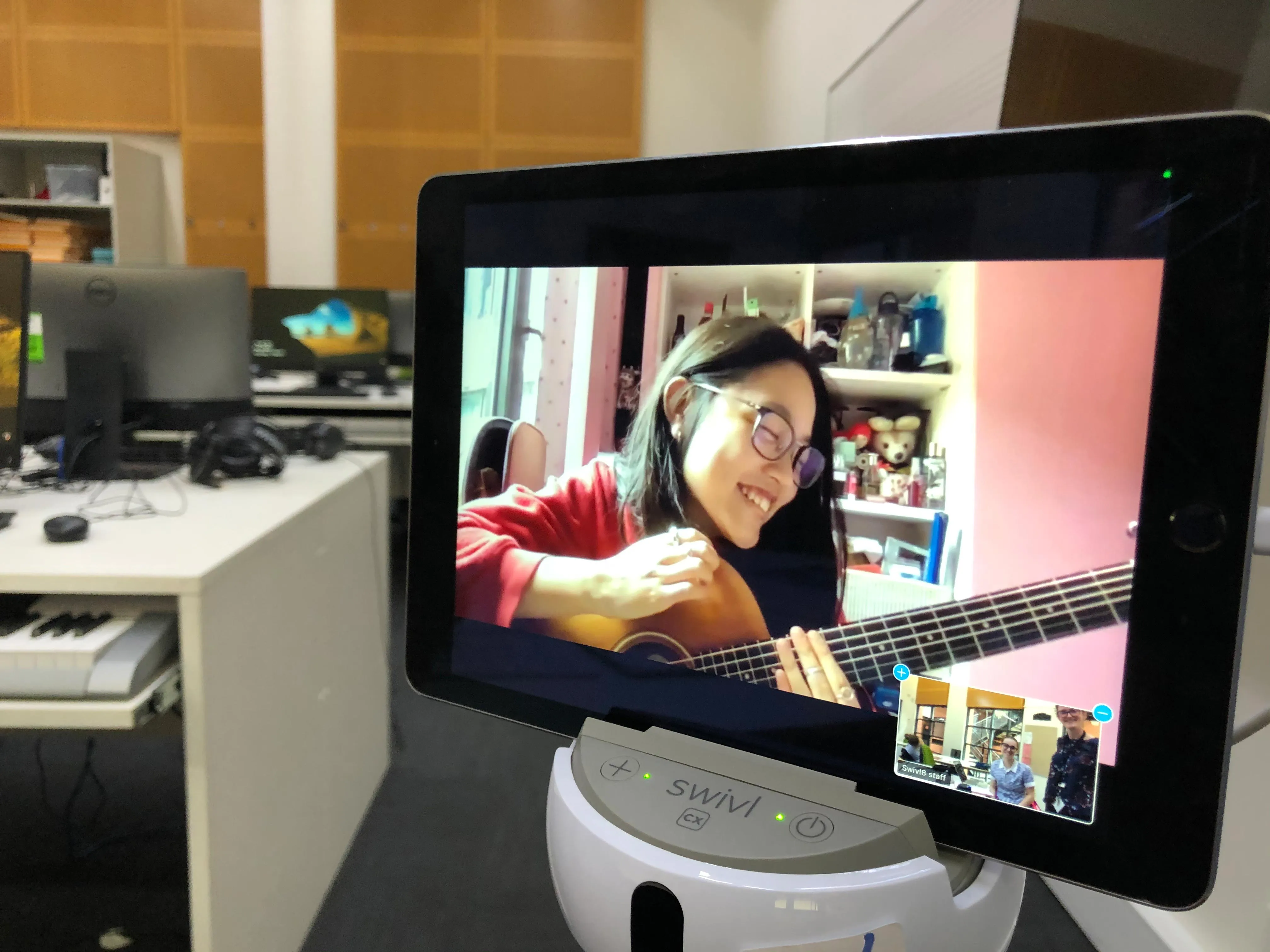

Music lessons via Swivl with Ayu Chan, Year 11 Student who is studying overseas


Music lessons via Swivl with Ayu Chan, Year 11 Student who is studying overseas
Interacting With Our Environments
Learning can occur across different environments – offline in a classroom with a teacher, offline outside the classroom with a teacher, online with a teacher, online independent of a teacher. There are a multitude of combinations. Expert teachers leverage the environment to ensure all students receive high-impact instruction in innovative ways.
We are privileged at Melbourne Girls Grammar to possess various environments to teach in, both within the red brick walls and outside of them. As a city school situated close to the beautiful Royal Botanic Gardens and the cultural and sporting precincts of Melbourne we also enjoy a well-resourced online platform. Together this plethora of diverse environments inform the learning that takes place at the School.

The Environment as the Third Teacher
"The physical environment is never simply a backdrop to the curriculum; it is an integral part of the curriculum…" (1)
This is clearly evidenced in the notion of the environment as the ‘third teacher’. At the Barbara Tolson Early Learning Centre our youngest Grammarians learning is informed by the Reggio Emilia approach – which sees the environment play a key role in their education. The environment includes the inside (classroom) and outside worlds and helps to build knowledge and understanding. Inside the classroom, various materials and items are used to foster the students’ understanding of what is being learnt. It is one of the foundational principles of early childhood education that the senses play a significant role in a child's development. We embed this principle deeply into our early childhood education programs.
As our Grammarians grow and progress through their educational journey at Melbourne Girls Grammar, they begin interacting with the environment differently. Kitchen gardens, geographical field trips and object-based learning are some of the ways these interactions take place. The environment also includes our facilities, such as the Artemis Centre, where our Grammarians engage in a range of challenging physical learning experiences. Even in our generalist learning spaces, our teachers utilise the physical environment to bring the curriculum to life for students in various ways.
The Environment as the Third Teacher
"The physical environment is never simply a backdrop to the curriculum; it is an integral part of the curriculum…" (1)
This is clearly evidenced in the notion of the environment as the ‘third teacher’. At the Barbara Tolson Early Learning Centre our youngest Grammarians learning is informed by the Reggio Emilia approach – which sees the environment play a key role in their education. The environment includes the inside (classroom) and outside worlds and helps to build knowledge and understanding. Inside the classroom, various materials and items are used to foster the students’ understanding of what is being learnt. It is one of the foundational principles of early childhood education that the senses play a significant role in a child's development. We embed this principle deeply into our early childhood education programs.
As our Grammarians grow and progress through their educational journey at Melbourne Girls Grammar, they begin interacting with the environment differently. Kitchen gardens, geographical field trips and object-based learning are some of the ways these interactions take place. The environment also includes our facilities, such as the Artemis Centre, where our Grammarians engage in a range of challenging physical learning experiences. Even in our generalist learning spaces, our teachers utilise the physical environment to bring the curriculum to life for students in various ways.
The Environment as the Third Teacher
"The physical environment is never simply a backdrop to the curriculum; it is an integral part of the curriculum…" (1)
This is clearly evidenced in the notion of the environment as the ‘third teacher’. At the Barbara Tolson Early Learning Centre our youngest Grammarians learning is informed by the Reggio Emilia approach – which sees the environment play a key role in their education. The environment includes the inside (classroom) and outside worlds and helps to build knowledge and understanding. Inside the classroom, various materials and items are used to foster the students’ understanding of what is being learnt. It is one of the foundational principles of early childhood education that the senses play a significant role in a child's development. We embed this principle deeply into our early childhood education programs.
As our Grammarians grow and progress through their educational journey at Melbourne Girls Grammar, they begin interacting with the environment differently. Kitchen gardens, geographical field trips and object-based learning are some of the ways these interactions take place. The environment also includes our facilities, such as the Artemis Centre, where our Grammarians engage in a range of challenging physical learning experiences. Even in our generalist learning spaces, our teachers utilise the physical environment to bring the curriculum to life for students in various ways.

Enhanced Learning Opportunities
High impact instructional strategies are based on rigorous and reproducible research into the most effective classroom practices. At Melbourne Girls Grammar, we leverage the environment to enhance these instructional strategies. From the BTC through to the Year 12 VCE classes, teachers use various techniques, such as cooperative learning and guiding questions, to enhance the learning that takes place.
The learning is enhanced in areas such as STEM when the students are able to actively participate in experiments and see how theoretical principles are enacted in real time. This is not new and many will be familiar with the test tube concoction or the flavour sensation on your tongue from different tastes. Today’s STEM learning environment extends this practice into the online realm where they can observe more complicated experiments and engage with scientific leaders on other continents, bringing their different expertise into the learning space.
Across the campus, students in History are able to gain an understanding of the ancient world through the innovative use of 3D printing to bring objects to life in the classroom. When studying about Ancient Greece or Rome, the ability to fabricate objects for students to ‘get their hands on’ brings History alive in the classroom. These objects could be the famous bust of Nefertiti, ancient Greek vases, or Roman coins. The learning environment can be transformed; it can facilitate understanding of the physicality of the societies they are studying.
For our Middle Years students in Wildfell, the environment becomes a presentation platform; a space to demonstrate their research, investigations and collaboration. Students at this level demonstrate their learning and achievements to parents, staff and other students through interactive platforms through their Exhibition of Learning.
Enhanced Learning Opportunities
High impact instructional strategies are based on rigorous and reproducible research into the most effective classroom practices. At Melbourne Girls Grammar, we leverage the environment to enhance these instructional strategies. From the BTC through to the Year 12 VCE classes, teachers use various techniques, such as cooperative learning and guiding questions, to enhance the learning that takes place.
The learning is enhanced in areas such as STEM when the students are able to actively participate in experiments and see how theoretical principles are enacted in real time. This is not new and many will be familiar with the test tube concoction or the flavour sensation on your tongue from different tastes. Today’s STEM learning environment extends this practice into the online realm where they can observe more complicated experiments and engage with scientific leaders on other continents, bringing their different expertise into the learning space.
Across the campus, students in History are able to gain an understanding of the ancient world through the innovative use of 3D printing to bring objects to life in the classroom. When studying about Ancient Greece or Rome, the ability to fabricate objects for students to ‘get their hands on’ brings History alive in the classroom. These objects could be the famous bust of Nefertiti, ancient Greek vases, or Roman coins. The learning environment can be transformed; it can facilitate understanding of the physicality of the societies they are studying.
For our Middle Years students in Wildfell, the environment becomes a presentation platform; a space to demonstrate their research, investigations and collaboration. Students at this level demonstrate their learning and achievements to parents, staff and other students through interactive platforms through their Exhibition of Learning.
Enhanced Learning Opportunities
High impact instructional strategies are based on rigorous and reproducible research into the most effective classroom practices. At Melbourne Girls Grammar, we leverage the environment to enhance these instructional strategies. From the BTC through to the Year 12 VCE classes, teachers use various techniques, such as cooperative learning and guiding questions, to enhance the learning that takes place.
The learning is enhanced in areas such as STEM when the students are able to actively participate in experiments and see how theoretical principles are enacted in real time. This is not new and many will be familiar with the test tube concoction or the flavour sensation on your tongue from different tastes. Today’s STEM learning environment extends this practice into the online realm where they can observe more complicated experiments and engage with scientific leaders on other continents, bringing their different expertise into the learning space.
Across the campus, students in History are able to gain an understanding of the ancient world through the innovative use of 3D printing to bring objects to life in the classroom. When studying about Ancient Greece or Rome, the ability to fabricate objects for students to ‘get their hands on’ brings History alive in the classroom. These objects could be the famous bust of Nefertiti, ancient Greek vases, or Roman coins. The learning environment can be transformed; it can facilitate understanding of the physicality of the societies they are studying.
For our Middle Years students in Wildfell, the environment becomes a presentation platform; a space to demonstrate their research, investigations and collaboration. Students at this level demonstrate their learning and achievements to parents, staff and other students through interactive platforms through their Exhibition of Learning.







Being Agile
The online learning space has changed significantly in the last few years. Melbourne Girls Grammar continues to be a world-leading school in developing effective programs that leverage new learning technologies.
Every year level engages with learning technologies to enhance their access to information, collaboration and communication. Innovative platforms continue to enter the market. It is incumbent on educators to be able to work through the myriad options available and select those that enable learning and increase access.
Sometimes ‘necessity is the mother of invention’, and this year, with some of our Grammarians still situated overseas, this has definitely been the case. Whilst the rest of us have returned to school onsite, and everyday life is in reach, an incredibly resilient group of Grammarians have continued learning remotely. Affected by the travel ban, eight students in the Senior Years (Years 9 - 12) - from Vietnam, Indonesia. China, Malaysia, and Hong Kong - have been unable to be immersed back into 'on campus' life. Swivl is essentially an iPad on a tripod that follows the teacher and immerses the student into the learning environment. Think ‘fly on the wall’ and you have the concept of how they can see and hear everything as though they were actually in the room.
Being Agile
The online learning space has changed significantly in the last few years. Melbourne Girls Grammar continues to be a world-leading school in developing effective programs that leverage new learning technologies.
Every year level engages with learning technologies to enhance their access to information, collaboration and communication. Innovative platforms continue to enter the market. It is incumbent on educators to be able to work through the myriad options available and select those that enable learning and increase access.
Sometimes ‘necessity is the mother of invention’, and this year, with some of our Grammarians still situated overseas, this has definitely been the case. Whilst the rest of us have returned to school onsite, and everyday life is in reach, an incredibly resilient group of Grammarians have continued learning remotely. Affected by the travel ban, eight students in the Senior Years (Years 9 - 12) - from Vietnam, Indonesia. China, Malaysia, and Hong Kong - have been unable to be immersed back into 'on campus' life. Swivl is essentially an iPad on a tripod that follows the teacher and immerses the student into the learning environment. Think ‘fly on the wall’ and you have the concept of how they can see and hear everything as though they were actually in the room.
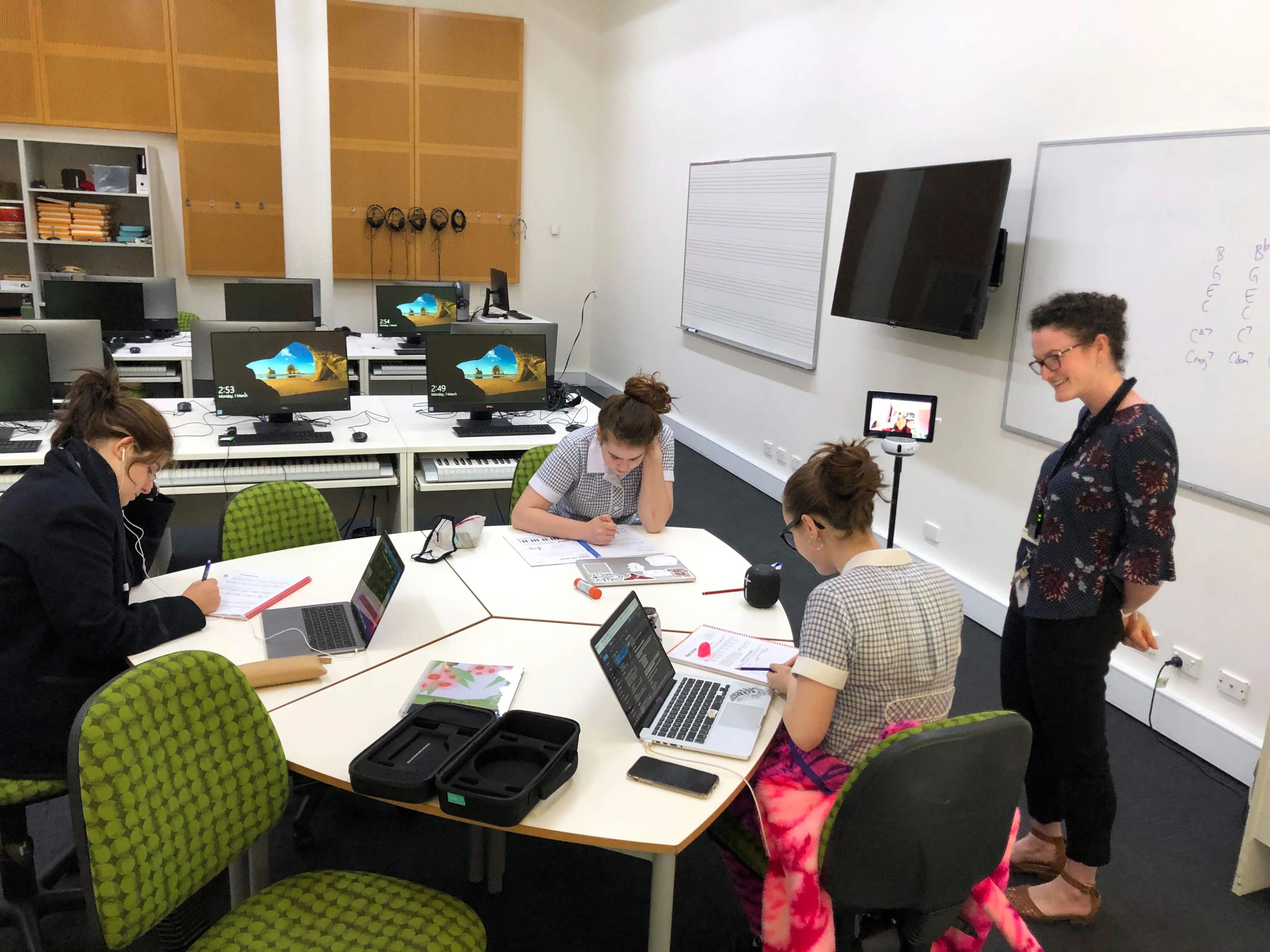

Using Swivl during a music class



Using Swivl during a music class


Using Swivl during a music class
While we've still had our training wheels on while we practise and fine-tune the use of the technology, feedback has been positive and incredibly heartfelt. Remote learners feel included, catered for and most importantly, motivated to engage in their academic program. They are learning how to overcome circumstances beyond their control.
The use of the new technology is evidence of how we leverage the online environment for high-impact instruction, irrespective of location to enhance learning for all Grammarians.
While we've still had our training wheels on while we practise and fine-tune the use of the technology, feedback has been positive and incredibly heartfelt. Remote learners feel included, catered for and most importantly, motivated to engage in their academic program. They are learning how to overcome circumstances beyond their control.
The use of the new technology is evidence of how we leverage the online environment for high-impact instruction, irrespective of location to enhance learning for all Grammarians.
While we've still had our training wheels on while we practise and fine-tune the use of the technology, feedback has been positive and incredibly heartfelt. Remote learners feel included, catered for and most importantly, motivated to engage in their academic program. They are learning how to overcome circumstances beyond their control.
The use of the new technology is evidence of how we leverage the online environment for high-impact instruction, irrespective of location to enhance learning for all Grammarians.

References
- Department of Education and Training. (2012). Educators - My Time, Our Place. https://www.dese.gov.au/nci/resources/educators-my-time-our-place
References
- Department of Education and Training. (2012). Educators - My Time, Our Place. https://www.dese.gov.au/nci/resources/educators-my-time-our-place
References
- Department of Education and Training. (2012). Educators - My Time, Our Place. https://www.dese.gov.au/nci/resources/educators-my-time-our-place





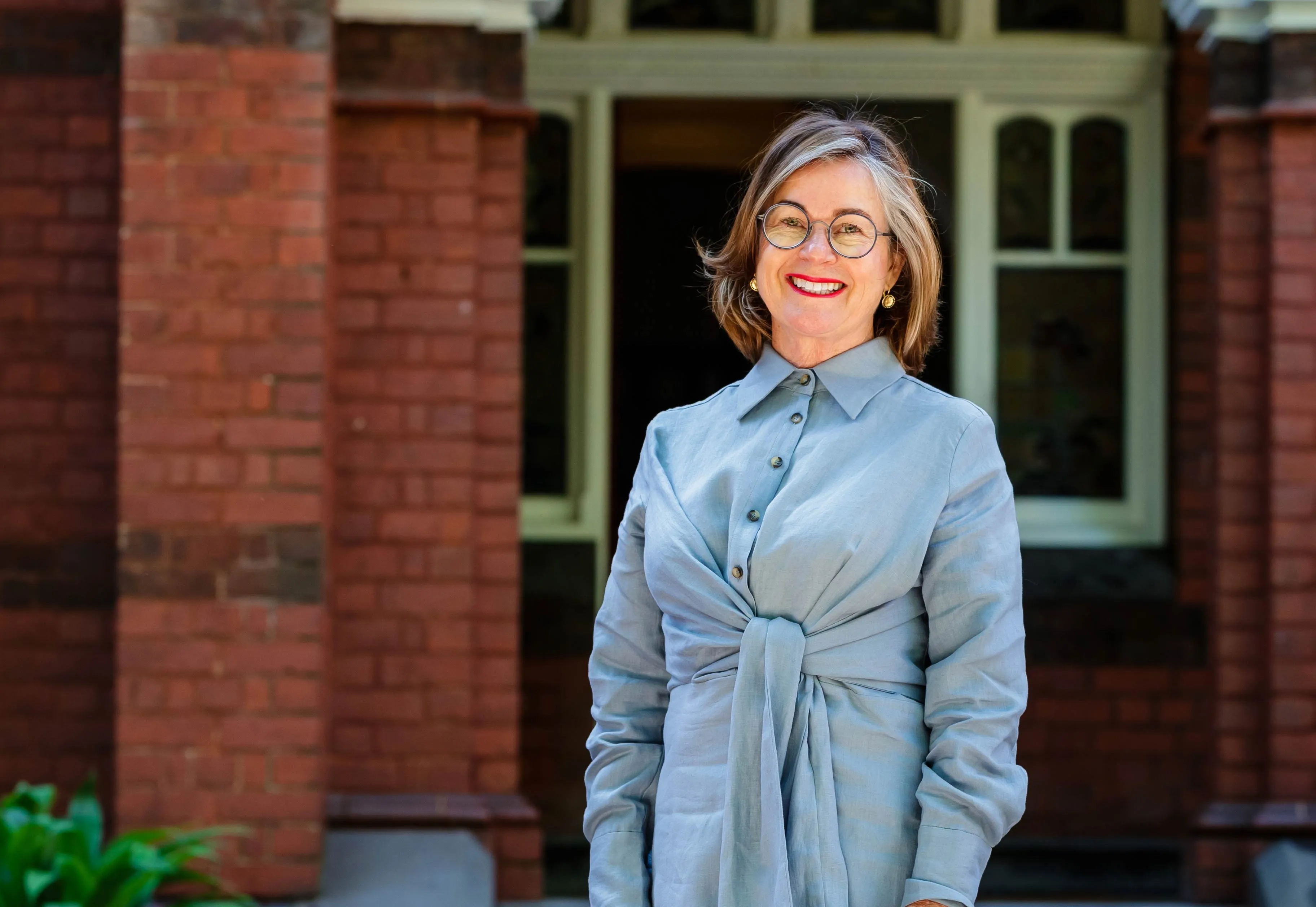
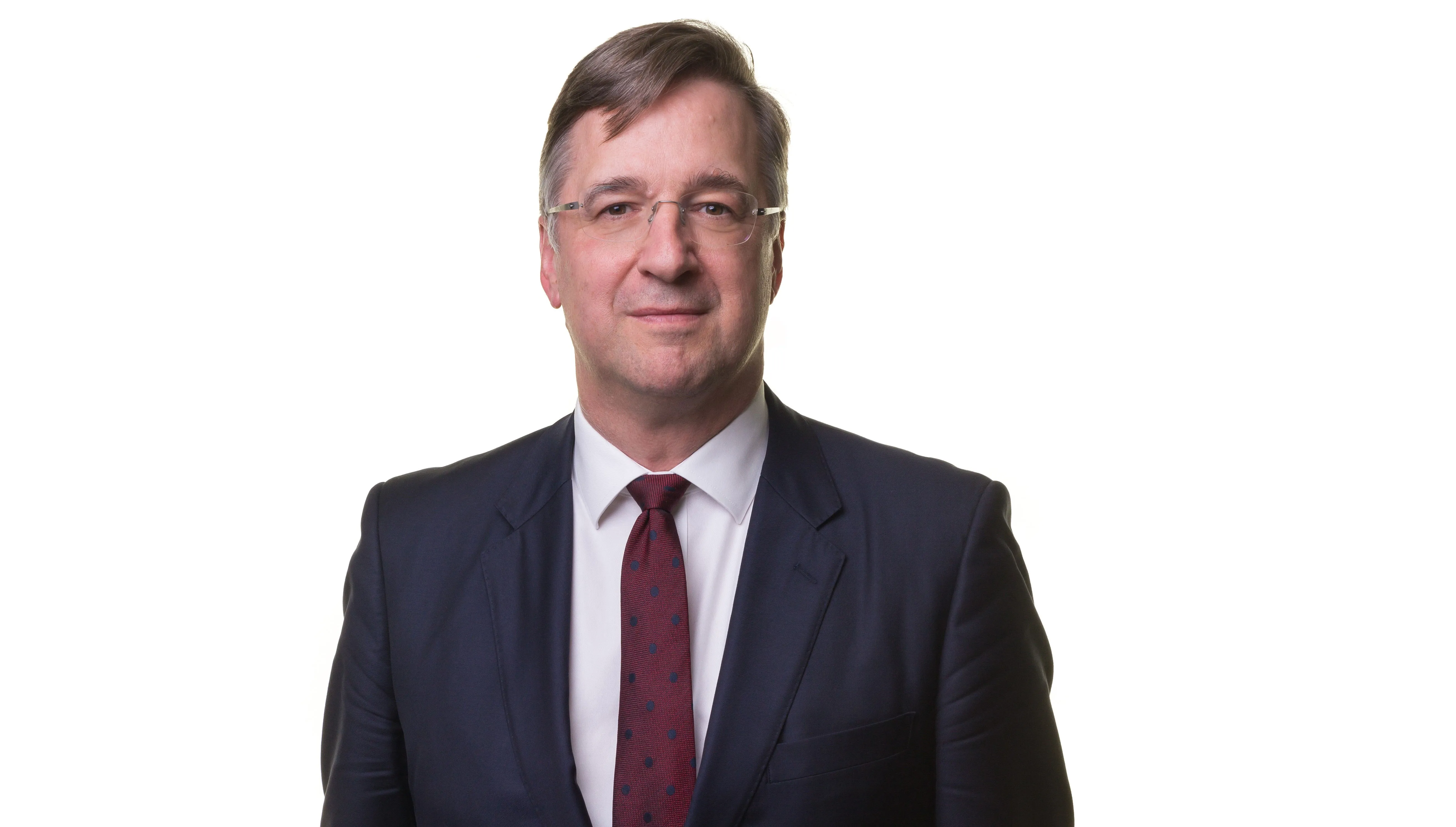
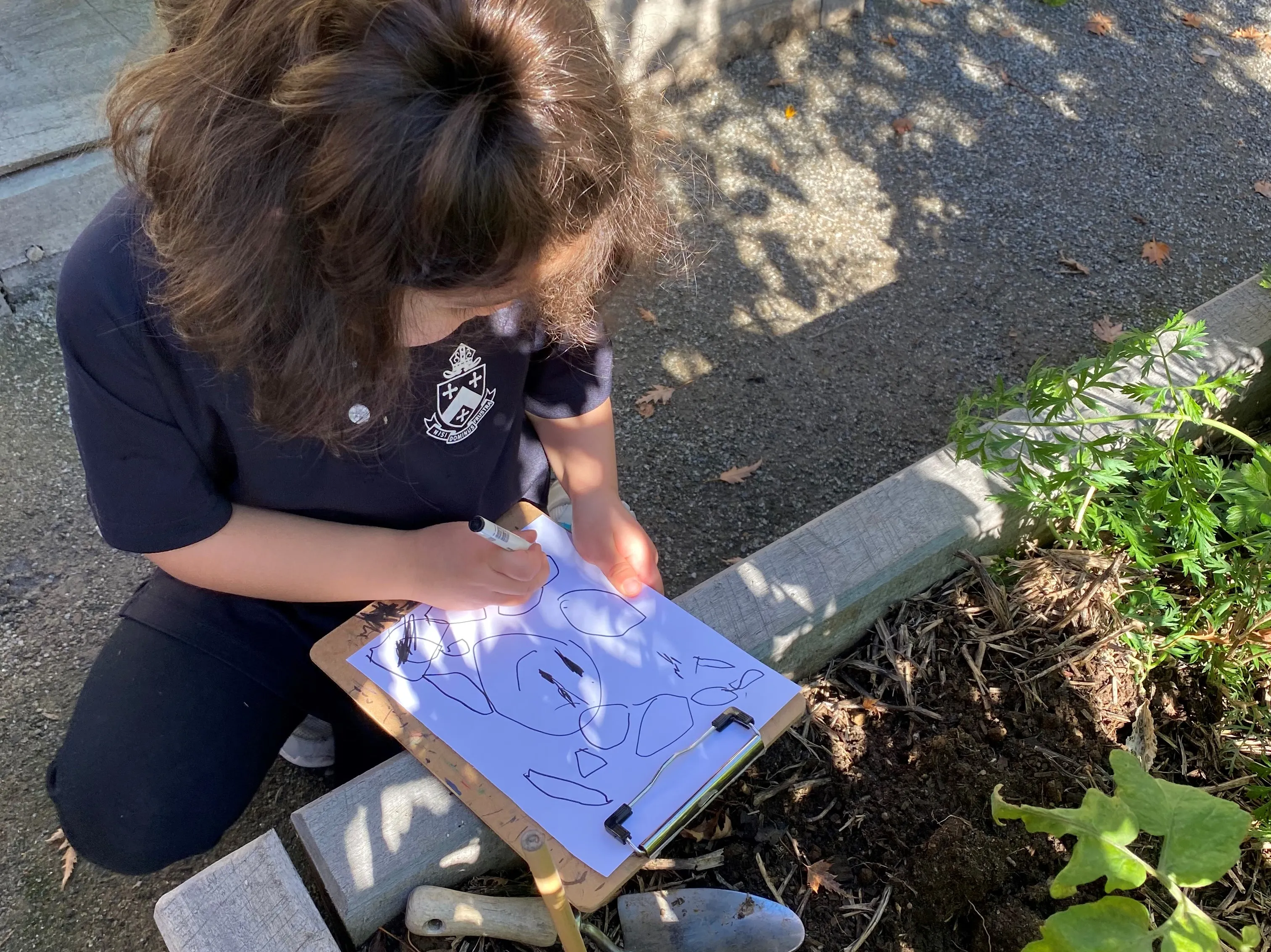
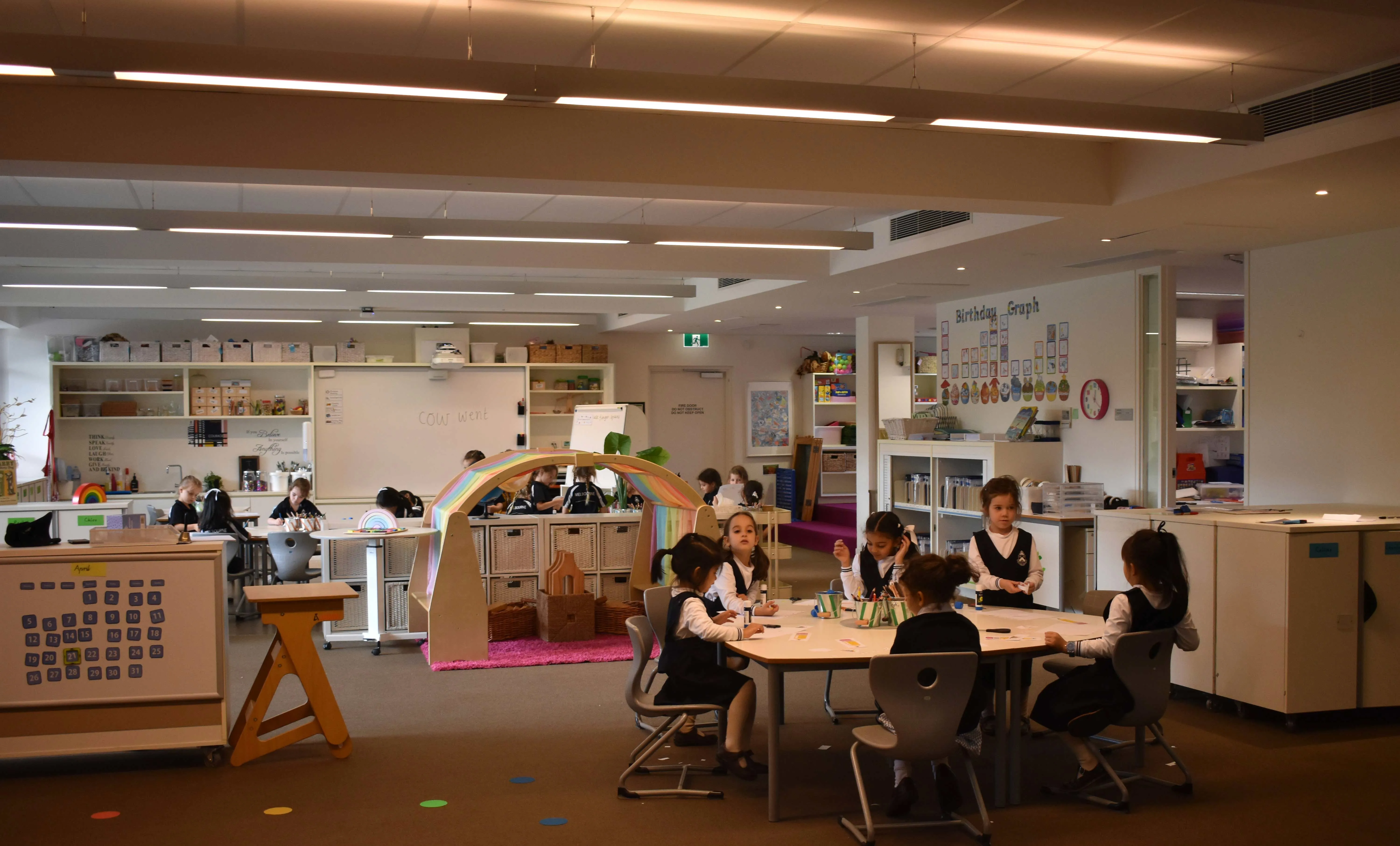
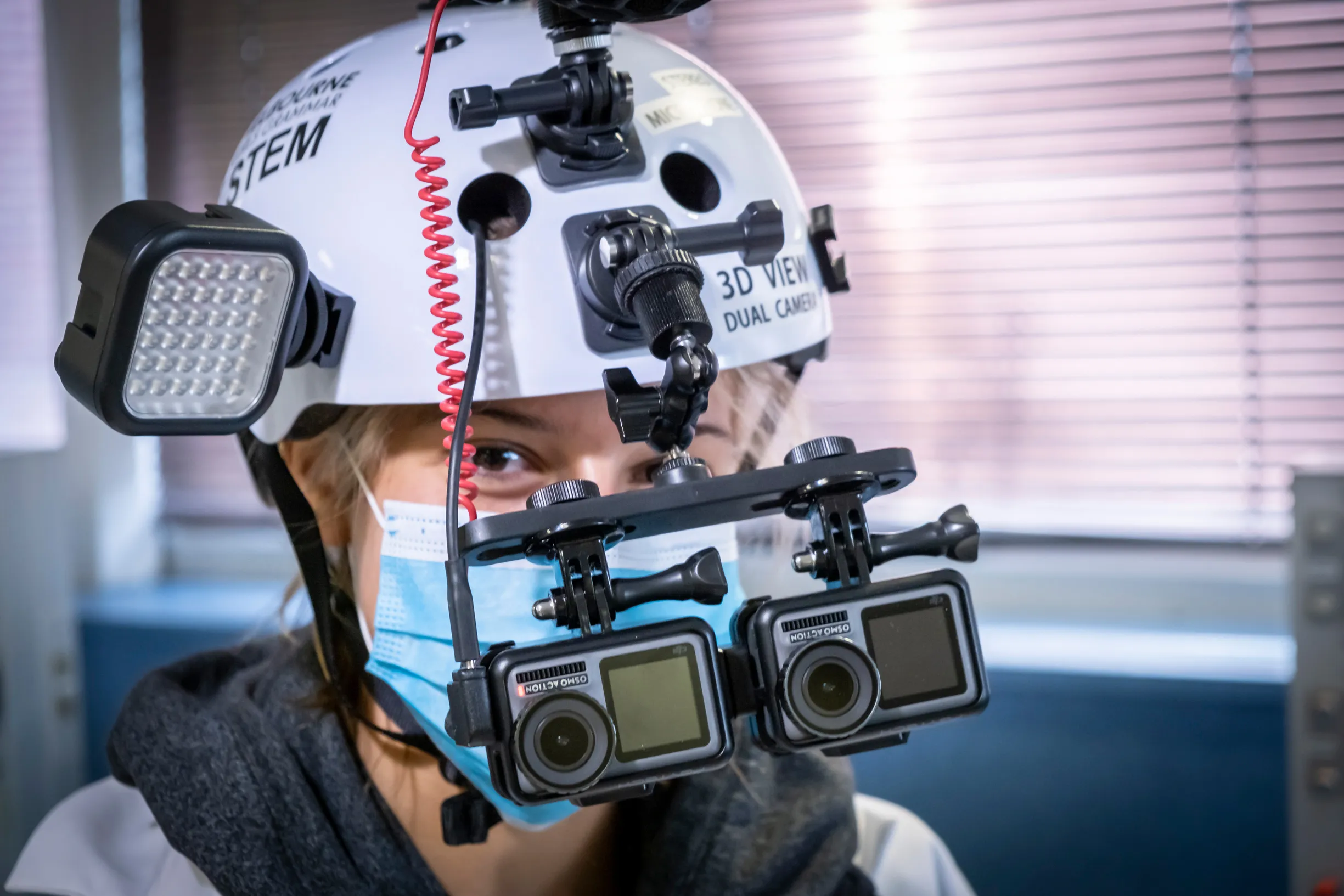

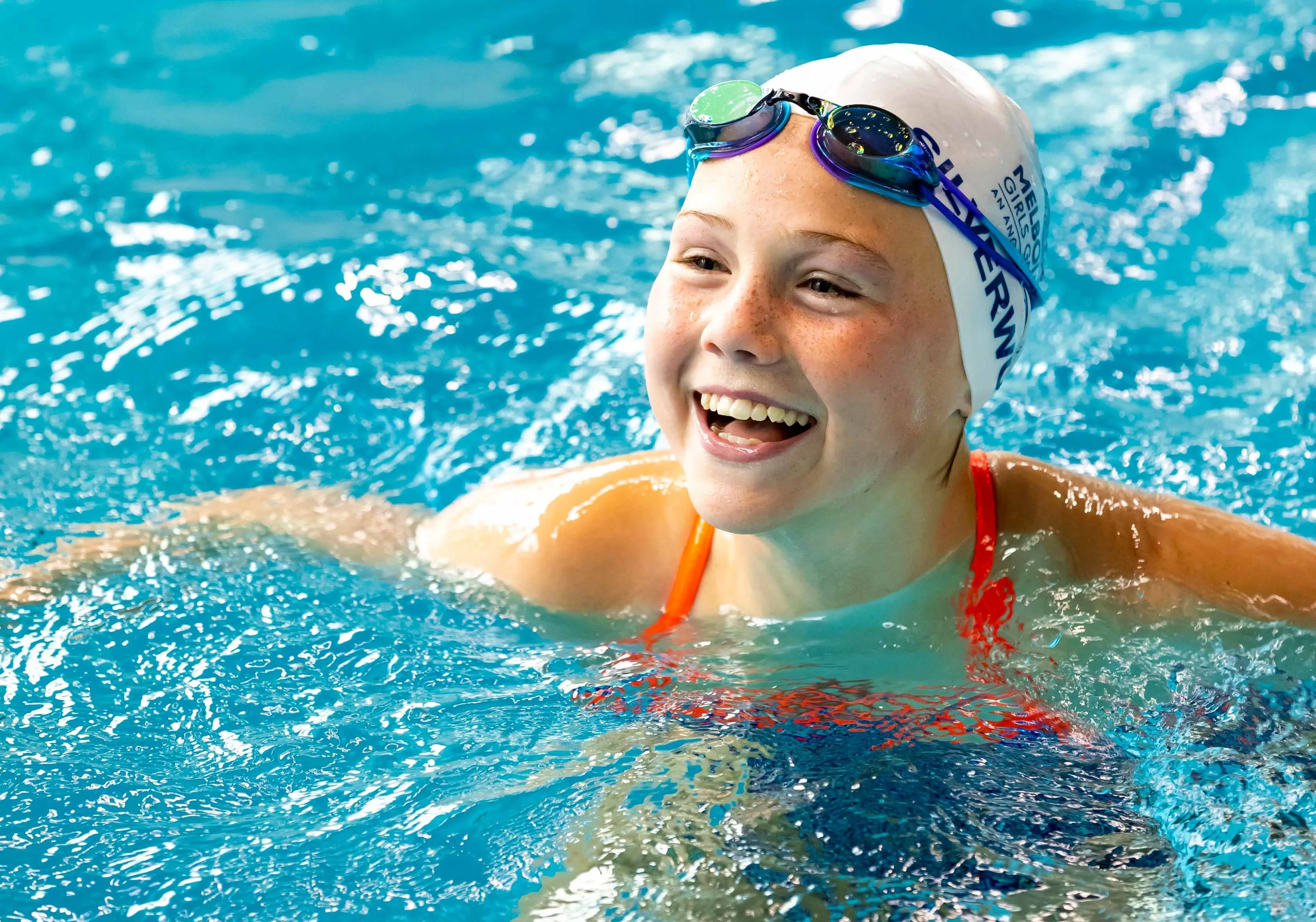

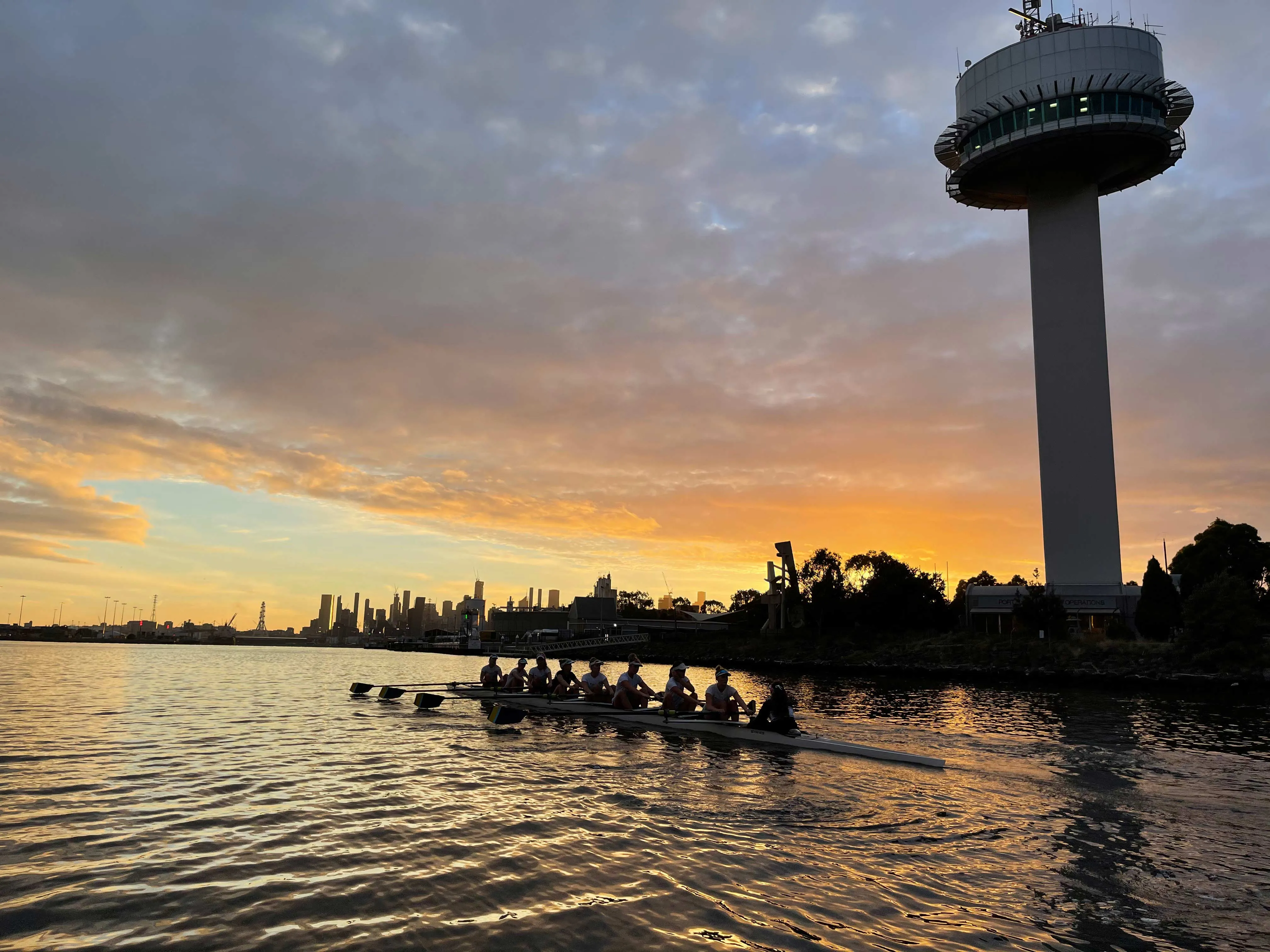
.webp)




